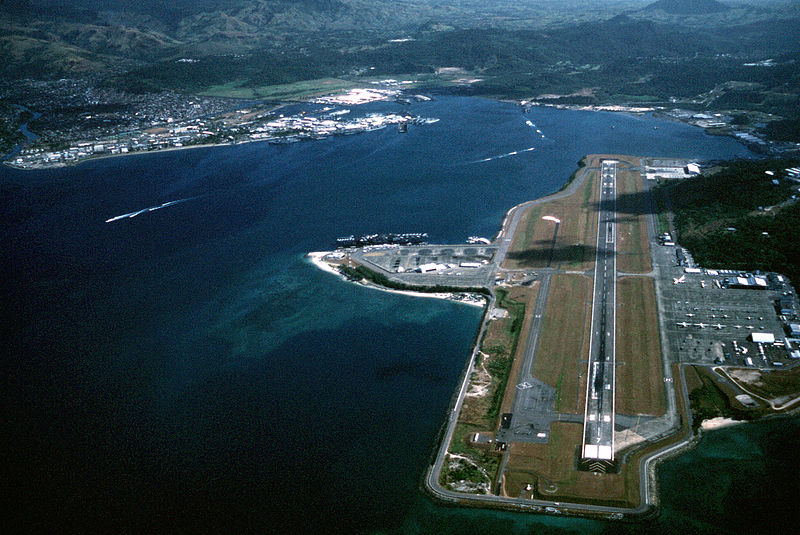 |
| An aerial view of Cubi Point, and in the background, Naval Station Subic Bay. (Image: Wiki Commons) |
By Dr. Renato Cruz de Castro
Manila is keen on moving ahead with its plans – with or without a major bilateral pact.
Amidst the tensions generated by China’s development of artificial islands in the South China Sea, Philippine Secretary of National Defense Voltaire Gazmin reiterated the Armed Forces of the Philippines’ (AFP) plan to rehabilitate the air and naval facilities in Subic Bay Freeport in the central part of the mainland island of Luzon. Subic Bay, a deep water harbor located fifty 50 miles northwest of Manila facing the South China Sea, was the service and logistic center for the U.S. Seventh Fleet until November 1992. Accordingly, this move will enable the AFP to quickly deploy its fighter planes and frigates to any contingency in the South China Sea in the face of China’s maritime expansion in these disputed waters.
Since 2011, the Philippines has rushed to build up the AFP’s credible defense posture. The Philippine Navy (PN) bought two Hamilton-class U.S. Coast Guard Cutters, and transformed these ships into surface combatants by equipping them with several automatic guns and attack helicopters. The Philippine Air Force (PAF) is set to acquire 12 FA-50 fighter planes from South Korea with the first two jets to be delivered later this year. The AFP intends to station these air and naval assets in Subic Bay which will become the Philippine military’s forward operating base given its proximity to Scarborough Shoal, which China occupied in June 2012.
The Philippine Department of Defense (DND) will spend Php100 million (estimated $2 million) to upgrade some of the former U.S. military facilities of Subic Bay. The Philippine government announced that the rehabilitation of these facilities will happen soon, and it will be focused on the old airport facilities in the former Cubi Point Naval Air Station (CUBINAS). Prior to 1992, CUBINAS served as a base for the U.S. Navy’s P-3 Orion anti-submarine warfare aircraft during the Cold War. The PAF will be allotted a 13-hectare portion of the old naval air base where shipping giant Federal Express (FEDEX) used to operate. Along with the air station, a portion of the free port will also be developed as a naval base for PN ships. The free port’s Ship Repair Facility compound will be the homeport of the PN’s latest acquisitions—the BRP Ramon Alacaraz (PF-16)and the BRP Gregorio Del Pilar (PF-15). Other port facilities such as Alava Pier, Juliet Pier, Bravo Wharf and Rivera Wharf will also be developed as part of the PN’s new naval base.
Read the full story at The Diplomat
